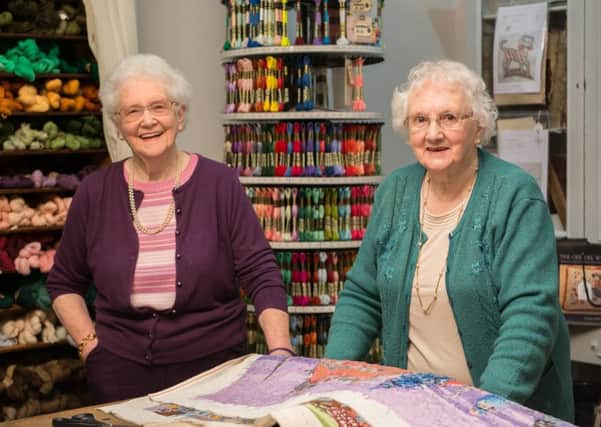Sewing Independence' from factory floor to freedom


Now the Wemyss School of Needlework in Coaltown-of-Wemyss in East Fife is showcasing their work in “Sewing Independence” – its first major exhibition outside of the school since 1936. The free exhibition opens at St Andrews Museum on 12 March.
The school offered the girls, who started at the school at age 14, the chance to “stitch their way to independence” equipping them more options than the physical hard graft of farm and factory work.
Advertisement
Hide AdThe school, established in 1877, was set up by wealthy philanthropist Dora Wemyss, the great-grand-daughter of a relationship between King William IV and his mistress the actress Dora Jordan.
This gave “royal connections” to the school, which in turn led to employment prospects for talented pupils and attracted wealthy customers for the girls’ exquisite embroidered work.
Wemyss had been inspired by the Royal School of Needlework in London and was determined to establish a similar school in Scotland.
She set up the first school at Wemyss Castle in 1877 before moving to new premises at Main Street in the village in 1880.
The school is now undergoing a revival and runs popular day classes, sells kits featuring its own designs and carries out private commissions.
Embroidery is seeing a renaissance which started after actress Angelina Jolie’s Versace wedding dress featured drawings by her children embroidered onto her gown.
Advertisement
Hide AdFiona Wemyss, family guardian of the current day school, said: “Dora Wemyss, my husband’s great, great aunt offered girls six-month apprenticeships. If they were particularly good they stayed on as an employee of the school while others found work as ladies’ maids or worked in their own homes. They were particularly sought after.
“It gave them independence, a skill to earn their own living, the ability to either stay on here or go and work for someone else so they were not just reliant on their husbands or fathers.”
Advertisement
Hide AdNames recorded in the school records include Christina Anderson, listed as a “scholar” in February 1881, and sisters Agnes and Christina Murray, who started at the school in June 1903 and August 1908 respectively.
Mary Birrell, 87, from Coaltown-of-Wemyss, the great-granddaughter of the first mistress at the school, Jean Webster, recalled: “The Wemyss owned the coal mines, so when the school was first built they had big fireplaces keeping it warm.
“So many of the girls told me that their forebears, and boys of their own age, left school and had no work really other than going into the pits. For the girls it was a long walk to the linen and rug factories at Dysart (around five miles away), starting work at 7.30am. So the school was their big chance.”
The exhibition is curated by postgraduate MLit students in museums and galleries studies at the University of St Andrews in collaboration with Fife Cultural Trust.
Student Jenny Greiner said: “There were so many beautiful items, the biggest challenge was which ones to take and not to take. We’ve tried to take what pieces may have come into the school for inspiration and copies the girls made.
“Pieces we chose include two embroidered wedding boxes or hope chests which women who were going to get married filled with linens and dishes. The original, bought in France by Lady Victoria Wemyss, dates from between the 17th-18th century. It was used as design inspiration for the box made in the school in the 1930s.”